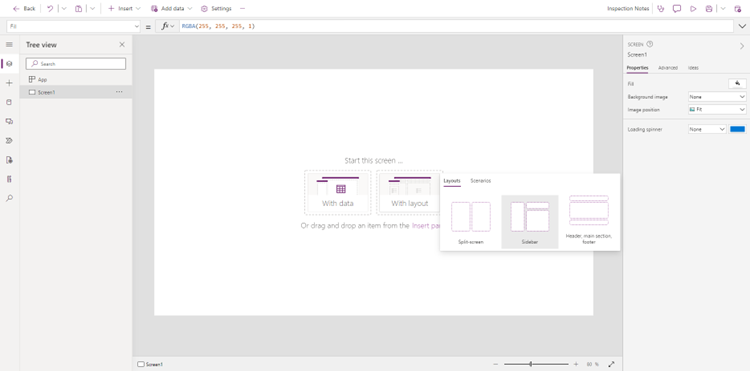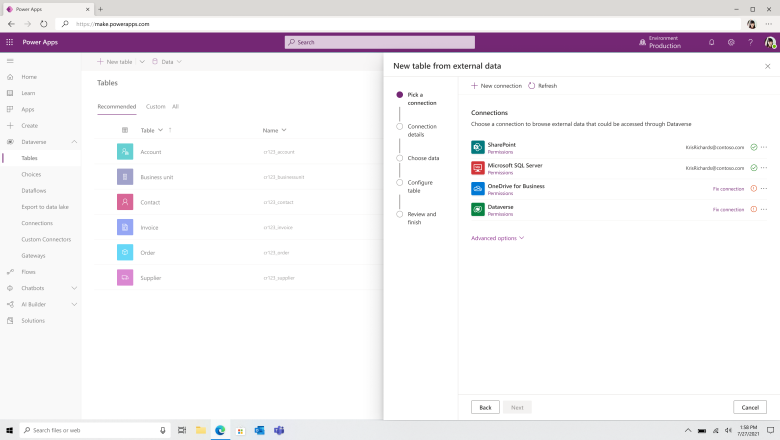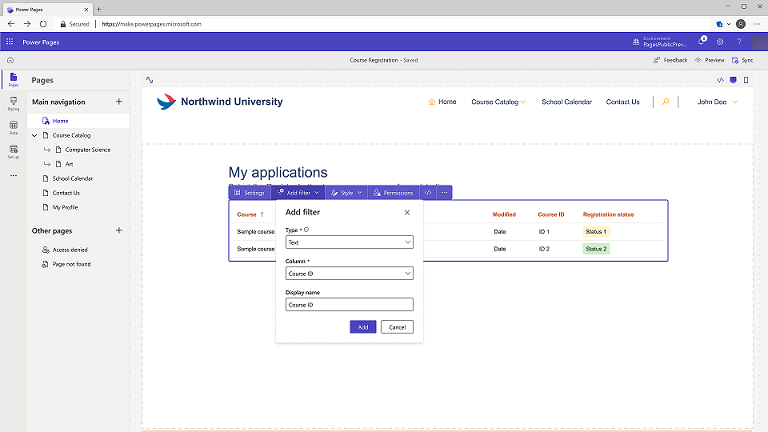Microsoft has announced the next wave of updates, improvements and changes to Dynamics 365 and the Power platform. Starting from October 2022 through March 2023, we will get automatic updates deployed via the cloud. Microsoft has used this system to deliver new improvements for the last few years, and by leveraging Azure, it keeps customers on the same version, making support more straightforward, and they can benefit from regular improvements. We’ve had a chance to read through the full release notes and detail our favourite Dynamics highlights, which you can download from us today.
We’ve highlighted some of the biggest changes coming to the Power Platform, including the Portals application.
2022 release wave 2 overview
Microsoft Power Platform enables users and organisations to analyse, act on, and automate the data to digitally transform their businesses. Microsoft Power Platform today comprises four products: Power BI, Power Apps, Power Automate, and Power Virtual Agents. It also has two add-ins: AI Builder and Power Pages.
Power BI
Power BI continues to invest in empowering every individual, team, and organisation to drive a data culture. Creation experience is improved by aligning our experiences with Office and enabling datasets authoring on the web. By bringing Power Query diagram view into Power BI Desktop, creators can use a no code experience to perform ETL on their data. For teams, Microsoft are bringing enhancements to Metrics focused on enterprise needs and integration with Viva Goals. In addition, big data experience is increased through automatic aggregations, query scale out, data protection capabilities through DLP and providing improved visibility into activity to admins.
Power Apps
Power Apps will expand governance capabilities to allow organisations to enable, manage, and support citizen development across the entire organisation. Makers and developers of all skill levels will be more productive over Microsoft Dataverse in a unified studio, with modern experiences to build and manage data and logic, as well as infused intelligence to support development, enrich data, and optimise user experiences. In addition to ensuring trust and the ability to leverage rich data experiences, both makers and users will benefit from out-of-the-box collaboration capabilities to enable users to be more productive when working together.
Key Power App Updates
Custom pages are responsive by default with rich layouts
Custom pages brought the power and control of canvas apps to the model-driven world. Custom pages are now being extended to introduce more tools to support makers creating responsive layouts quickly while still maintaining the precision of canvas apps.

- Responsive layout templates: Choose from a selection of rich responsive layouts for rapid, responsive custom page development.
- Easy layout configuration: Easily move controls from one responsive section to another in layouts and maintain the control and precision of canvas app development.
- Multiple form factor support: Support desktop, mobile and other form factors automatically with a single custom page just as you are accustomed to with model-driven apps.
Power BI quick reports in Power Apps
Create reports in the Power BI service starting with a view in a model-driven app. Power BI automatically generates the visuals for you, so you can start exploring the data with just a few clicks.
The capability to enable Power BI quick report visualization on a table on an existing app is generally available. All new apps have this capability enabled by default, with the app setting still available for makers to disable.

With Visualize this view option on all grid pages, you can:
- Create a Power BI quick report, starting from a view with just one button-click. The Power BI service generates visuals and a layout intelligently based on the underlying data.
- Make any necessary modifications to visuals or the filters or the columns (or any combination of all three) using the display name of the columns on the quick report.
- Save the Power BI report to a workspace of your choice, so you can access it anytime and customize it for your needs.
A subset of these capabilities is already available as a preview.

Use Teams chat with others in app
Start multiple Teams chats with colleagues without leaving your model-driven app. You can easily find existing chats related to a record or start a new one with anyone else who is working on the same record.
All chats are shown in a side-panel on the right. The chats are tracked as chat activities in the timeline and activities views.
Note: This feature will be available in preview for all stand-alone model-driven apps.
Easily copy links to records
Share records as easy as Office documents. The new share button allows you to easily copy a link to the record and email links to records.
This feature is now automatically enabled for all records. Previously, it could be previewed by enabling the Collaboration preview feature in environment settings.
Connect to external data from Dataverse
Connect existing data sources, such as SQL Server, Excel file, or Microsoft List with Microsoft Dataverse and interact with that external data as if it’s part of Dataverse.
Microsoft Dataverse has supported virtual tables for a long time. They’re extremely powerful but can be difficult to set up. With this release, you’ll be able to create tables in Dataverse that surface external data by leveraging simple connections to find the external data. For example, a Dataverse table with data from an Excel workbook in OneDrive or a SQL Server in Azure.

Depending on the connection, a table will be automatically generated with the correct schema and integration. You can do all this through a simple wizard in Power Apps, which gives you as much control as you need over configuring the details while creating the Dataverse table.
Create and join Teams meetings in-app or from appointments
With the capability to join meetings directly from Power Apps, you can now save time with just one button click.
Easily add Microsoft Teams meetings from an appointment in your model-driven app. You can also join a Teams meeting with a single button-click from the appointment or the timeline control.
Previously, this was a preview feature and needed to be enabled in the environment settings, but now, it’s generally available and enabled by default for all appointments in tenants that use Teams.

Power Pages
Power Pages continues to invest in bringing more out-of-the-box capabilities to support both low-code/no-code development and professional developers. Some of the salient capabilities in this release allow makers to have additional capabilities to work with forms and lists using the design studio and get them started quickly using additional solution templates. There are enhancements for professional developers to do more with the sites using Microsoft Power Platform CLI tool and Visual Studio Code as well as for administrators to better administer and govern their Power Pages sites.
Select new Power Pages site templates
Prebuilt site templates provide a strategic investment to showcase the potential of what a maker can build with Power Pages. Two new prebuilt solution templates and a blank starter canvas will be enabled for makers to create new sites from the template hub.
This feature will enable two new prebuilt website templates and a blank starter canvas. These templates will be focused on the following scenarios:
- Blank starter canvas: Used mainly by professional developer makers. It has a header, footer, and one section component. This will allow developers to create customised sites seamlessly without needing to delete and modify page templates.
- Permit Application submission template: Highlights an application submission pattern and showcases how to create a complex multi-step form inside a website.
- New Employee Onboarding template: Features a checklist tracker pattern and showcases how to create a series of steps as forms that can be completed in any order.
Select Dynamics 365 website templates in the template hub
This feature will enable makers to create Dynamics 365 website templates from within the template hub. Dynamics 365 website templates will extend various Dynamics 365 apps to enable user-facing functionality.
With this feature, makers can create websites using various Dynamics 365 website templates from the template hub to extend their Dynamics 365 applications, such as:
- Customer self-service
- Partner
- Community
- Employee self-service
Environments with Dynamics 365 customer service and omnichannel will be able to create customer self-service, community, and employee self-service sites. Environments with Dynamics 365 Sales will be able to install the partner management template.
Configure data grids in design studio
This feature will enable makers to do advanced customizations of data grid components (formerly known as lists) within Power Pages design studio.
Makers will be able to configure and style data grid components in the design studio.
New capabilities include:
- Support for metadata filtering of column data present in the data grid component.
- Grid action styling, such as the create button to add a new row to the data grid.
- Row action customizations, such as icons customizations for edit and delete rows.

Power Automate
Power Automate is more accessible than ever with new experiences to help users of every skill level build out their cloud and desktop flows. Organisations need to automate their deployments of Power Automate, so there are additional enhancements for application lifecycle management (ALM), and with the increased usage of robotic process automation (RPA), we’re adding features to make it easier to manage machines in Azure and the credentials of your users and accounts.
Use SharePoint Connector in Power Automate for desktop
The new SharePoint actions in Power Automate for desktop increase the speed and ease of use of desktop automations.
The SharePoint Connector is the first cloud connector coming to desktop flows. It brings the power of the cloud right inside desktop automations.
With the SharePoint Connector in Power Automate for desktop, you can combine actions from both desktop (for example, extract data from web page) and the SharePoint Connector (for example, update a SharePoint list), all within a single desktop flow.
You get improved performance when looping between a desktop action (for example, reading from an SAP GUI or an Excel file from the local drive) and a SharePoint action (for example, uploading a file to SharePoint) compared to having them in separate cloud flows and desktop flows.
The SharePoint Connector is more discoverable for users who start their automation journey in Power Automate for desktop.

Improvements to the flow sharing experience
We’ve improved how you can share flows with others, so it’ll be easier for your team members to use flows that you build. In 2022 release wave 2, you’ll be able to send your flows in a Teams message or using a shareable link.
We’ve added more capabilities to improve how you can share flows with others. For example, this feature allows you to send someone a flow using a shareable link, or you can share flows by sending them in a Teams message to a person, group, or channel. Also, you can include a personalized message to the person/group with whom you’re sharing a flow. In this message, you can specify why you’re sharing the flow, what it does, if you want them to collaborate with you or take any action on it, and so on.
Power Virtual Agents
Power Virtual Agents brings improvements in the authoring experience with commenting, Power Pages integration, data loss prevention options, proactive bot update messaging in Microsoft Teams, and more. Creating a bot is typically a complex and time-intensive process, requiring long content update cycles and a team of experts. Power Virtual Agents gives anyone in your organisation the ability to create powerful custom bots using an easy, code-free graphical interface, without the need for AI experts, data scientists, or teams of developers. A bot can interact with users, ask for clarifying information, and ultimately answer a user’s questions.
Create bots in new datacenters
Grow your business by creating bots in new locations that cater to that location’s specific needs or scenarios.
Power Virtual Agents can be deployed into different Microsoft Azure datacenters, which are also referred to as regions. You can create a bot in your tenant’s location by default, or you can choose the datacenter you want to use when you’re setting up your environment.
Create bots from existing online support content
Speed up your initial development time by automatically filling bots with simple topics from a website when they’re created.
As soon as you create a bot, it can use AI natural language capabilities to extract relevant topic and answer information from your website. This means bots will be production ready as soon as you create them, as they’ll be able to respond to simple questions without the bot author needing to perform extensive content manipulation or topic authoring.
Use voice responses over telephony channel
Microsoft have improved the experience of customers when they use a bot with the telephony channel. In 2022 release wave 2, you can get insights for improving your interactive voice response (IVR) solution in the Power Virtual Agents built-in analytics.
Today, you can build intelligent, no code chatbots in Power Virtual Agents that help your customers or employees get the right information or resolve their problem as soon as possible, over their preferred messaging channels.
In this release wave, Power Virtual Agents will add the ability to optimize your chatbots for voice interactions and make the bots available over telephony, whether that’s on an existing phone number or a new phone number you get specifically for this purpose.
Notify Teams users about query updates
Let your bot reach users proactively by notifying them when a time-off request is approved or send reminders for daily health check-ins.
We’re adding the ability to send proactive messages from a bot to its users in a Teams chat by using a Power Automate workflow. For example, a bot user might ask the bot Has my budget been approved? to which the answer is Not yet.
Now, instead of the user having to ask the question again every day, you can create a Power Automate flow that notifies the user that the response to their question has changed, and what the new response is.
Microsoft Dataverse
Microsoft Dataverse continues investment in Azure Synapse Link. Customers will be able to unlock deeper insights from Dataverse data using the power of Azure Synapse. Deeper integration with Azure Active Directory will simplify sharing while improving governance and security. Enhancements to Dataverse data modeling will allow customers to build new types of applications leveraging rich and intelligent data types.
AI Builder
AI Builder continues to enable citizen developers to use and customize AI capabilities to build more intelligent apps and workflows. Lifecycle and governance of AI Builder models will be improved with enhanced versioning, deployment, and monitoring capabilities. Makers will also benefit from new features for Intelligent Document and Text Processing like the ability to manage human in the loop validation, easier integration of large data sets for automated e-mail processing, and the ability to process contracts and multi-page tables in documents.
Microsoft Power Platform continues to push forward with Wave 2 2022…
The updates detailed above are just some of the hundreds of new capabilities and improvements for the Microsoft business platform, if you want the full release notes you can download it now. If you have any questions about Dynamics 365 and the Power Platform, including the new updates for Wave 2, please get in touch, we’ll be happy to discuss any queries you may have.

Daniel Norris
Communications Manager
Daniel Norris is the communications manager for The Portal Company. His role is to bring you the latest updates, tips, news and guides on Dynamics 365 Portal. If you have any questions, please get in touch with us.
